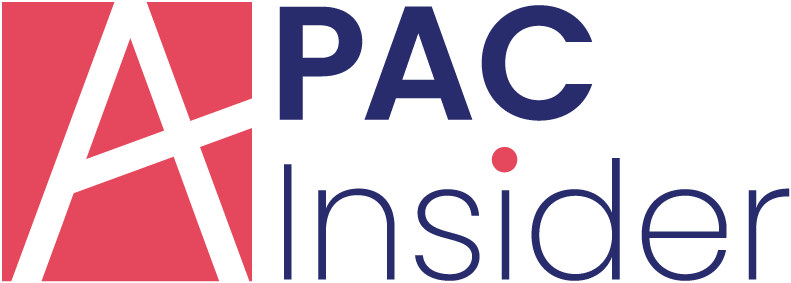Businesses today operate in a hyper-competitive landscape where delivering an exceptional customer experience is a critical differentiator. To truly understand what your customers think, feel, and need, leveraging Voice of the Customer (VoC) platforms has become indispensable.
What is the Voice of the Customer (VoC)?
The Voice of the Customer (VoC) is the process of capturing customer insights, opinions, and feedback about your products, services, or overall brand experience. This feedback can be gathered through surveys, social media, reviews, or other customer interactions. VoC helps businesses understand customer expectations and sentiments and enables them to make data-driven improvements in their offerings.
VoC can be broken down into three key components:
- Direct Feedback: Includes surveys, interviews, and focus groups.
- Indirect Feedback: Includes customer reviews, social media comments, and support tickets.
- Inferred Feedback: Gleaned by analyzing behavior, like website tracking or purchase patterns.
The goal of a VoC program is not just to collect feedback but to transform it into actionable insights that can drive better decision-making across every touchpoint of the customer journey.
Key Benefits of Using VoC Platforms
The adoption of top-tier VoC platforms provides numerous advantages for businesses, including:
1. Enhanced Customer Experience
VoC platforms help identify gaps in customer satisfaction and allow companies to address pain points proactively. This drives a positive experience, boosting loyalty and advocacy.
2. Improved Products and Services
By analyzing customer feedback, businesses can tailor their offerings to meet customer needs more effectively, leading to better product-market fit.
3. Increased Customer Retention
Understanding why customers stay—or leave—enables businesses to build long-term relationships, ensuring reduced churn and sustained revenue streams.
4. Data-Driven Decisions
VoC data equips companies with concrete evidence for decision-making. Instead of relying on assumptions, businesses can identify trends and act accordingly.
5. Competitive Advantage
Listening to customers and adapting to their feedback allows businesses to stay ahead of competitors who fail to utilize this data effectively.
Top 5 Voice of Customer Platforms for 2025
Now that we’ve covered the essentials, let’s dive into the top Voice of Customer platforms worth considering for 2025. Each platform offers unique capabilities designed to revolutionize how businesses understand and act upon customer feedback.
1. Revuze
Revuze is a cutting-edge VoC platform renowned for its AI-driven sentiment and semantic analysis. By automating the collection and processing of feedback from multiple sources (e.g., product reviews, support tickets), Revuze empowers companies to derive meaningful insights without requiring heavy involvement from data scientists.
Key Features:
- Fully automated analytics with no need for manual setup.
- Aggregates data from social media, reviews, surveys, and more.
- Offers real-time sentiment analysis and customer emotion tracking.
- Customizable dashboards for role-specific insights.
- Predictive analytics to anticipate customer future needs or challenges.
Best Suited For: Medium to large enterprises looking for an end-to-end automated VoC solution that delivers intelligent analytics across vast data sets.
2. Chattermill
Chattermill combines machine learning and natural language processing (NLP) to unify customer feedback across all channels into one cohesive platform. It’s well-suited for companies seeking to break down organizational silos and gain a single view of the customer experience.
Key Features:
- Advanced NLP capabilities to understand the nuances in customer language.
- Automatically categorizes feedback into key themes like product, pricing, or customer service.
- Integrates with CRMs, support platforms, and marketing tools.
- Self-serve analytics allow non-technical users to explore data trends.
- Provides industry benchmarks to compare customer metrics.
3. Zonka Feedback
Zonka Feedback specializes in take-the-wheel simplicity with feature-rich feedback collection tools. Known for its versatility, Zonka Feedback supports omnichannel surveys and offers a robust CX management dashboard, making it perfect for small to medium-sized businesses.
Key Features:
- Supports feedback collection across email, SMS, kiosks, and online forms.
- Offers ready-to-use survey templates for key metrics like NPS, CSAT, and CES.
- Real-time alerts for negative feedback to promptly address issues.
- Easy integrations with tools like Slack, Zendesk, and HubSpot.
- Allows managers to track employee performance alongside customer metrics.
4. GetFeedback
GetFeedback is a customer-centric VoC solution that seamlessly balances survey simplicity with enterprise-grade insights. Designed with customer experience professionals in mind, it excels in consolidating survey responses into insights that drive positive business outcomes.
Key Features:
- Allows users to build visually appealing, branded surveys tailored to each touchpoint.
- Offers robust omnichannel capabilities, including web, email, mobile, and SMS.
- Features a drag-and-drop survey builder for quick implementation.
- Consolidates data into a unified dashboard with detailed analytics.
- Includes close-the-loop feedback tools for follow-ups and problem resolution.
5. MonkeyLearn
MonkeyLearn is an AI-powered text analytics tool that focuses on helping businesses derive actionable insights from unstructured customer feedback. Unlike traditional VoC platforms, MonkeyLearn thrives in analyzing large volumes of text at scale.
Key Features:
- Customizable machine learning models to tag, classify, and analyze feedback.
- Excellent for social media and text-heavy sources like reviews and support logs.
- Straightforward APIs that integrate easily with CRM and data visualization tools.
- Drag-and-drop interface for setting up text-processing workflows.
- Sentiment analysis and topic detection features for complex feedback systems.
Choosing the Right VoC Software for Your Needs
When selecting a Voice of Customer platform, it’s critical to align its features with your organizational goals and resources. Here’s what to keep in mind:
1. Integration Capabilities
Ensure the platform integrates seamlessly with your existing tools, such as CRMs, marketing automation systems, and customer support platforms.
2. Ease of Use
A user-friendly interface ensures that both technical and non-technical team members can utilize the platform effectively.
3. Scalability
Choose software that grows with your business. It should handle increased data volume, users, and complexity as your customer base expands.
4. Customization
Every business has unique requirements. Opt for platforms that let you customize feedback forms, dashboards, and reports to match your needs.
5. Automations and Analytics
Advanced analytics powered by AI and machine learning can process large datasets, providing real-time insights and predictive capabilities.
6. Customer Support
You’ll want a responsive support team that can address technical glitches, ensure proper implementation, and advise on best practices.


























